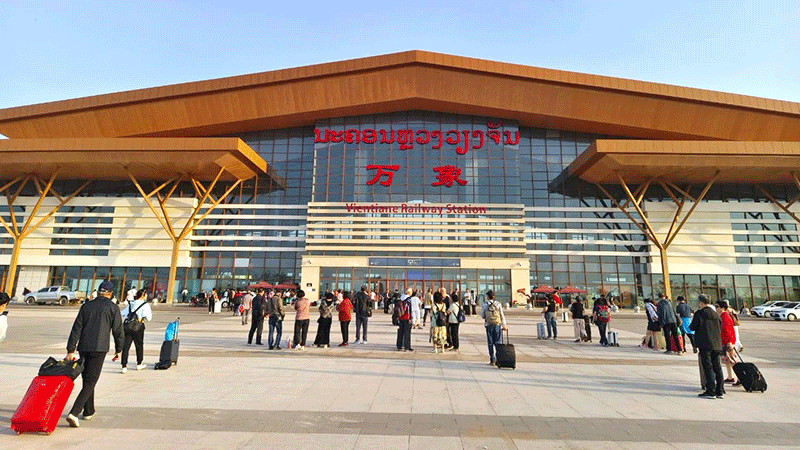 |
| Tourism and transportation will remain among the key drivers over the next five years. |
Govt targets 5.5 percent annual growth over next 5 years
The government is aiming for an ambitious average annual economic growth rate of 5.5 percent as recommended in the draft of its 2026-2030 development plan, up from the average 4.24 percent expected to be recorded for the past five years.
The figure is cited in the 10th five-year National Socio-Economic Development Plan for 2026-2030, which is currently being drafted in line with the Development Vision to 2030, laying a strong foundation for Laos to graduate from Least Developed Country status, slated for 2026, and continue progressing beyond this milestone.
Striving to create an independent and self-reliant economy, the government will continue to place a strong focus on addressing economic and financial difficulties, and avoiding building up large debts, Deputy Minister of Finance Ms Phonvanh Outhavong said.
The government will “strive to manage and decrease public debt so it remains below 70 percent of GDP,” she told a recent seminar held in Vientiane.
Public debt has already fallen from 112 percent of GDP in 2022 to 94 percent in 2024.
The government is also aiming to lower the average annual inflation rate to 5 percent, with a fluctuation range of ±2 percent over the next five years, a drop from the average 17.81 percent recorded over the previous five years. Inflation declined to 4 percent in October.
Ms Phonvanh highlighted key potential sectors to drive and sustain steady growth and stabilise the economy, including plans to unlock greater potential in hydropower, agriculture and agro-processing, mining and mineral processing, as well as industrial production linked to regional supply chains.
Tourism, transportation, and logistics will continue to play a vital role, leveraging Laos’ strategic position as a regional transit hub connecting to regional and global markets.
Ms Phonvanh pointed to the Laos-China Railway and three dry ports—located in Vientiane and the provinces of Savannakhet and Champasak —as remarkable achievements that have enhanced connectivity and driven growth.
Further investment will also be allocated for infrastructure development and expanding regional and global connections to make Laos a more attractive destination for production, services, trade, and investment.
To maximise these opportunities, the government remains committed to improving the business environment by delivering good governance and streamlining procedures.
Support measures will be introduced to assist micro, small, and medium-sized enterprises, strengthen state-owned enterprises, and promote the digital economy.
Ms Phonvanh underscored the importance of quality human resource development and training to equip the workforce with skills that match the increasing demand for skilled personnel.
In line with the country’s green growth strategy, the 2026-2030 socio-economic development plan prioritises environmental and natural resource protection, aiming for the effective use of resources and 70 percent forest cover nationwide.
To meet the plan’s macroeconomic targets, Laos will require total investment of 579,301 billion kip, equivalent to 22.1 percent of GDP, to fund development projects and sustain growth.
Fulfilment of these goals is expected to reduce the poverty rate from 15 percent in 2025 to 10 percent by 2030.
By Souksakhone Vaenkeo
(Latest Update November 6, 2025)
|


